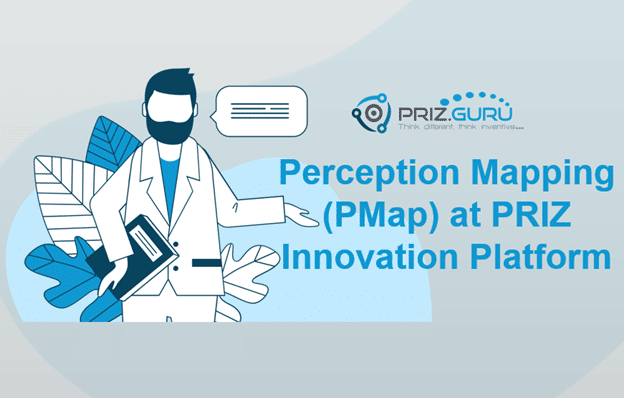We are excited to announce that we have recently released an additional creative thinking tool: Perception Mapping (PMap). In this post, we want to describe what is it good for and why should anyone use it.

Perception mapping (PMap) is a creative thinking tool that allows finding blockers (barriers) that prevent achieving a certain goal.
When one creates a plan of how to achieve something, he will typically build a list of things needed for it, list of actions to be taken. It is no doubt that all these actions (perceptions) are good and aim to reach the goal, but some of them are blockers that will prevent achieving that goal (in comparison to the rest of perceptions).
PMap tool allows finding these blockers. Then, the blockers should be addressed and removed first to ensure the success of the project.
* In PRIZ Innovation Platform the PMap creative tool performs mapping, scoring, and blockers definition automatically (the steps in bold).
PMap is suitable for both technical and non-technical projects.
Examples:
Perception is the ability to see, hear, or become aware of something through the senses. Take a look at the picture below.

Try to describe one feature of the object:
Both perceptions are right and wrong at the same time.
They are right separately, one by one, but they are wrong because in isolation they cannot describe the reality.
Being together, they describe the reality (the picture that is shown above). The reality can be reproduced if both statements are looked at together.
So, to describe and analyze reality, we need a number of perceptions – the more, the better.
This one will be easier to describe by example.
Our target is: LEARN TO SWIM.
We collected different perceptions and listed them in the picture below.

As you can see, all perceptions are good and help to achieve the target. Nevertheless, Perception 2 is a blocker – you cannot swim without a swimming pool. A blocker is a perception that prevents or resists the application and effectiveness of the other perceptions. The blocker has to be removed first to allow the rest of the perceptions to be effective.
Of course, the example of swimming is trivial. Try to imagine that in more complex cases. You can miss a real blocker. Without finding the blockers and removing them, you will work hard, spend a lot of money and time without much progress.
This article might interest you: Where do problems come from? What generates a problem?
Let’s reiterate…
#1. Define the goal: GOAL
#2. Create the query: “WHAT SHOULD BE DONE TO ACHIEVE THE GOAL?”
#3. Collect perceptions allowing to reach the GOAL:

For easy operation, we can assign letters or numbers to each perception (in our case, letters).
#4. All the perceptions are related one-to-another because they all answer the same question: “What should be done to achieve a certain goal?” The relations between the perceptions are defined as “LEADS TO”.
For instance, as shown in the table below:

#.5 The next step is mapping the perception: the perceptions found related to another through LEADS TO should be connected with an arrow. An arrow is always directed to target perception (the one that perception leads TO). In an ideal situation, no special perceptions appear on the map – each perception has only one connection. In other words, all perceptions are equal.
In real life, the map can get more sophisticated, as shown in our particular case:

All these special perceptions will get scores according to the following rules:
Based on the mapping and scoring, the results are shown in the table below:

Perception 4 (D) – received the highest score and ranked as the strongest blocker.
Again, it does not mean that Perception 4 (D) is the most important and the rest are not. Not at all. All perceptions are good and important, but Perception 4 (D) is a blocker and prevents or resists the effectiveness of the other perceptions.
Perception 4 (D) should be completed first in order to remove the blocker (barrier).
Perception 7 (G) should be completed next, followed by other medium rank blockers.
That’s all there is to it!
It is free!
Perception mapping (PMap) was initially introduced by Edward DeBono (DeBono, E., “Water Logic”, Viking, 1993.) and developed by Darrell Mann and other investigators:
Darrell Mann, “Hands-On Systematic Innovation for Business and Management”, EGP, October 2004;
If you want more information on this topic, we recommend visiting our blog. Remember that at Priz Gurú, we work to facilitate creative processes. Come back to us anytime.